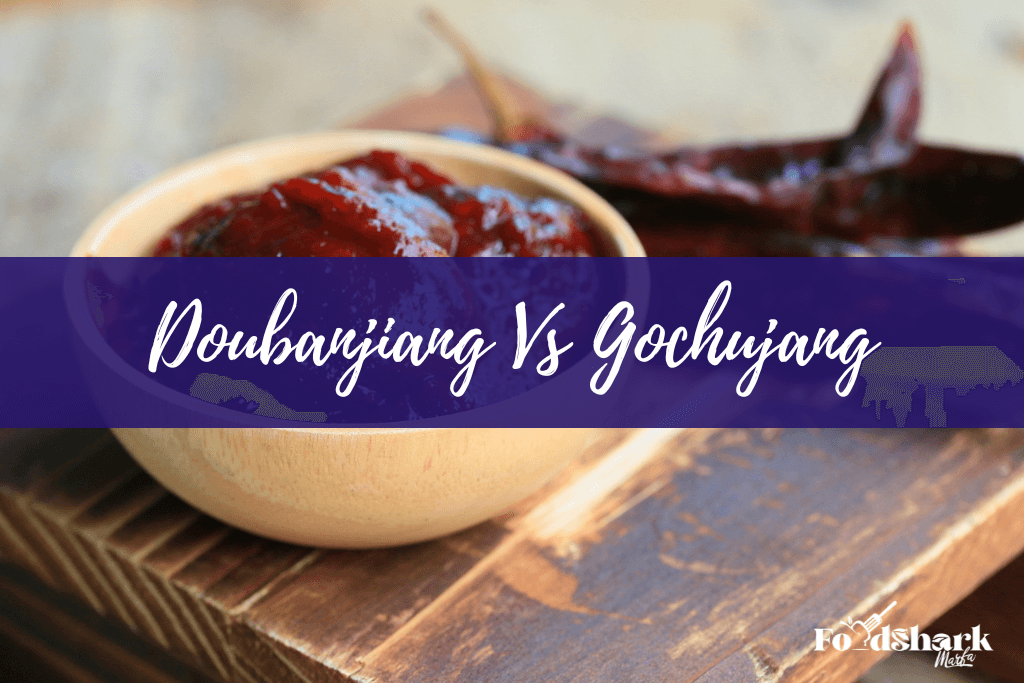Due to the growing fascination with various aspects of Asian culture, including K-pop, Chinese and Korean dramas, Japanese anime, and more, there has been a surge in people's interest in all things Asian, with cuisine being one of the main ones.
Now, if you are familiar with Asian cuisine, you have probably heard of the terms doubanjiang and gochujang. These are both types of pastes or condiments, originating from different regions: doubanjiang from China's Sichuan province and gochujang as a staple in Korean cuisine. Each of these pastes possesses unique characteristics while sharing some similarities.
If you are interested in learning more about the world of doubanjiang and gochujang, let us get started!
What is Doubanjiang?

Doubanjiang is a spicy, salty, and fermented chilli bean paste made from broad beans, chilli peppers, salt, flour, and various spices. It is also known as douban, toban-djan, broad bean chilli sauce, or fermented chilli bean paste to people. Doubanjiang is primarily produced in the Sichuan province of China, which is why it is also known as “the soul of Sichuan cuisine”.
Doubanjiang is a flexible ingredient that is implemented in a wide range of Sichuan styles of cooking, including dishes like Mapo Tofu and Kung Pao Chicken. Its main job is usually to enhance the flavour of the existing dish, however, it is also widely used as a condiment or a dipping sauce.
What is Gochujang?

Gochujang is another popular Asian chilli paste that originates from Korea. The main ingredients of gochujang are as follows: gochugaru (Korean chilli powder), glutinous rice, fermented soybeans, and salt. The ingredients are mixed together and fermented in a clay pot for several months before being used.
Gochujang has a unique flavour profile, combining spiciness, sweetness, savouriness, and umami. The consistency is thick, sticky, and smooth. It is deep red/ reddish brown in colour, similar to tomato paste. It is a really popular ingredient in traditional Korean cooking.
What are the similarities between Doubanjiang and Gochujang?
There are, of course, many valid reasons why many people get confused between doubanjiang and gochujang. The visual aesthetics, ingredients, usage, spiciness, etc. are some of the main points of similarity between the two.

Firstly, both Doubanjiang and Gochujang look incredibly similar in terms of visuals. Both pastes are deep red/ brownish in colour due to the chilli peppers and fermentation process. In addition, the texture is also similarly thick
Secondly, in terms of ingredients and making processes, both pastes have fermented soybeans as their base. The long fermentation process that goes into making these pastes gives them a strong umami flavour.
Again, doubanjiang and gochujang both have chilli peppers in them, making them hot and spicy, though the levels of spiciness vary depending on other factors. The uses also sometimes coincide, as they can both serve as condiments and accompaniments for other dishes.
What are the differences between Doubanjiang and Gochujang?
Well, despite the similarities, doubanjiang and gochujang are definitely not the same thing. They originate from different cuisines and possess varying flavour profiles, ingredient compositions, textures, and degrees of spiciness.
Firstly, Doubanjiang belongs to Chinese cuisine, more specifically the Sichuan style of cooking. They are traditionally used to make Sichuan noodles, Sichuan Hot Pot, Beef Noodle Soup, Sichuan boiled beef, etc. Gochujang, on the other hand, is a fundamental ingredient in Korean cuisine, used in dishes like bibimbap, bulgogi, and tteokbokki (Korean rice cake).

Again, their flavour profiles also vary. Even though both are made with chilli, doubanjiang is notoriously spicier and more savoury, so much so, that it is often considered too hot to be consumed as a dipping sauce. Gochujang, in contrast, has a blend of more complex flavours encompassing sweetness, spiciness, and umami. As a result, it becomes spicier than many doubanjiang varieties but is generally less intensely hot.
The third difference between doubanjiang and gochujang lies in their ingredient compositions. While doubanjiang is primarily made from fermented broad beans, chilli peppers, salt, and sometimes wheat flour, Gochujang has red chilli peppers, glutinous rice, fermented soybeans, and salt. The differences in the ingredients give these dishes their unique quirks and nuances.
The textures of the two are also different. Doubanjiang, for instance, boasts a coarse and grainy consistency, characterized by its rustic, chunky composition. In stark contrast, gochujang takes on an entirely different persona in terms of texture; it's remarkably smooth, possessing a sticky, almost velvety quality that closely resembles the consistency of tomato paste.
Now, turning our attention to their spiciness levels, gochujang strikes a delicate balance between heat and sweetness, creating a beautifully nuanced flavour profile. It is celebrated for its unique ability to blend these contrasting elements seamlessly, offering a harmonious and well-rounded taste experience. On the flip side, Doubanjiang has gained fame for its fiery temperament. It is renowned for unleashing a potent wave of heat that can overwhelm the palate with its intense spiciness.
Frequently Asked Questions
Can you substitute doubanjiang for gochujang?
The flavour profiles of the two pastes are vastly different. Nevertheless, if a recipe calls for doubanjiang but you only have gochujang on hand, you can substitute it by incorporating extra red chilli powder into the dish. The reverse is also possible. It's important to note, however, that while this substitution can work, the taste won't be an exact match.
Conclusion
Overall, In the realm of Asian cuisine, doubanjiang and gochujang, originating from China's Sichuan province and Korean cuisine, respectively, represent two distinct flavour profiles.
Though they share visual similarities and both use fermented soybeans, their origins, flavours, ingredients, and textures differ significantly, making them unique and exciting additions to the world of Asian cooking.
If you are keen on discovering the subtle nuances of Asian cuisine, we would suggest you try out both Doubanjiang and gochujang in their own glory.


